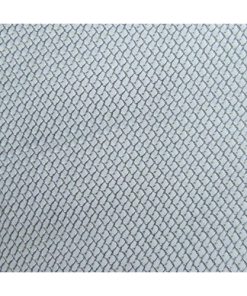Military-Grade EMF Blocking Defense Fabric
$24.95
This is raw cut fabric. EMF Fabric cut off a roll, packaged and then delivered to you!
Need 40ft or more? Give us a call, instant discount!
Out of stock
Notify me when item is back in stock.

In today’s fast-paced world, electromagnetic frequencies (EMFs) are ever-present. While the scientific community is still exploring the full extent of EMF harm, some studies suggest potential adverse effects on human health. Our EMF fabric is designed to provide you with protection and peace of mind, especially in areas where you need it the most. Pre-order now and experience a better living environment.
Here are three practical ways to use our EMF fabric if you’re on a limited budget:
- Your Bed: Drape the fabric around your bed to create a protective barrier while you sleep, promoting rest and rejuvenation.
- Windows: Attach 1-2 layers of our EMF fabric over your windows to reduce EMF exposure while still enjoying natural sunlight.
- Second Floor Bedrooms: Place the fabric under your bed if your bedroom is on the 2nd floor or above for added protection. Ground floor bedrooms won’t require this step.
By using our EMF fabric in these key areas, you can help shield yourself from potential harm caused by electromagnetic radiation. Our fabric functions similarly to a Faraday cage, an invention by the English scientist Michael Faraday in 1836. This technology is designed to block external electromagnetic radiation, creating a safer space within.
While EMF research is ongoing, there are numerous studies and sources exploring the potential risks of EMF exposure. Some notable sources include:
- The World Health Organization (WHO): The WHO has classified radiofrequency electromagnetic fields as possibly carcinogenic to humans (Group 2B), based on an increased risk for glioma, a malignant type of brain cancer. Source: https://www.who.int/peh-emf/about/WhatisEMF/en/
- BioInitiative Report: A comprehensive review of over 1,800 studies on the biological effects of EMFs, which highlights potential health risks, such as DNA damage, increased cancer risk, and effects on the nervous system. Source: https://bioinitiative.org/
- The International Commission on Non-Ionizing Radiation Protection (ICNIRP): An independent organization that provides scientific advice on non-ionizing radiation protection, including EMFs. Source: https://www.icnirp.org/
Remember, it’s essential to stay informed and take precautions to protect yourself and your loved ones. Pre-order our EMF fabric now and invest in a better living environment that promotes improved sleep and overall well-being.
An example of creating a bed emf protecting cage,

| Weight | 1 oz |
|---|



















WM (verified owner) –
EMF fabric works as described. I covered my bedroom window as suggested and awoke more clear headed and refreshed. Helps with making sleep more restful and changes the feel of the atmosphere in less than 24hrs.
leahslt (verified owner) –
This fabric is amazing! I put it under my bed as recommended and I have had the best sleep. I could instantly feel a difference in energy! Incredible!